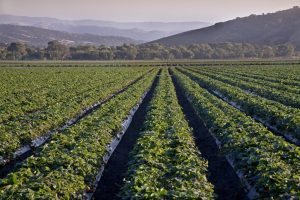A new strain of the fusarium wilt pathogen could become a substantial problem for strawberry growers. Research Plant Pathologist with the USDA Agricultural Research Service, Peter Henry said the new strain is called fusarium wilt race 2. Fusarium has largely been kept at bay due to resistant strawberry varieties. However, that could be in jeopardy.
“The discovery that my lab made last fall is there are other strains that had previously not been identified that can cause disease on those resistant cultivars,” said Henry. “They overcome this resistance gene that’s in the strawberry genome, kind of like an arms race between the pathogen and the plant or the plant breeders.”
Fortunately, the issue that was discovered in Oxnard last year does not appear to be widespread. Henry said it has been found in five different locations, all within a few miles of each other. Many other fields have been tested in and around the area, but the fusarium wilt race 2 pathogen was not identified.
“These initial observations suggest that it’s not common right now and that it really is limited to a small number of fields. But we’ll be ramping up this work soon with our RPA method,” Henry explained. “Our RPA method is just passing through the validation steps now. That is the method that will allow us to go back and test hundreds of samples from previous years. That should tell us definitively how widespread it is across the state.”
Researchers in Henry’s lab have developed molecular assays to better identify the specific fusarium wilt race 2 pathogen. Henry said they expect to have the qPCR and RPA methods available for beta testing by private and public labs before the end of the year. The improved testing methods will help better understand the overall issue, which will help guide further research efforts.
“If it’s really only present in a few areas, it may make more sense to expend more resources to really keep it in those few areas,” said Henry. “But if it’s really widespread and we find it in many, many fields, then the cat is out of the bag. The prevention efforts may be less helpful at that point. So, it can really help us emphasize the need for prevention through sanitation if it’s only found in a few areas.”

Brian German
Ag News Director / AgNet West











